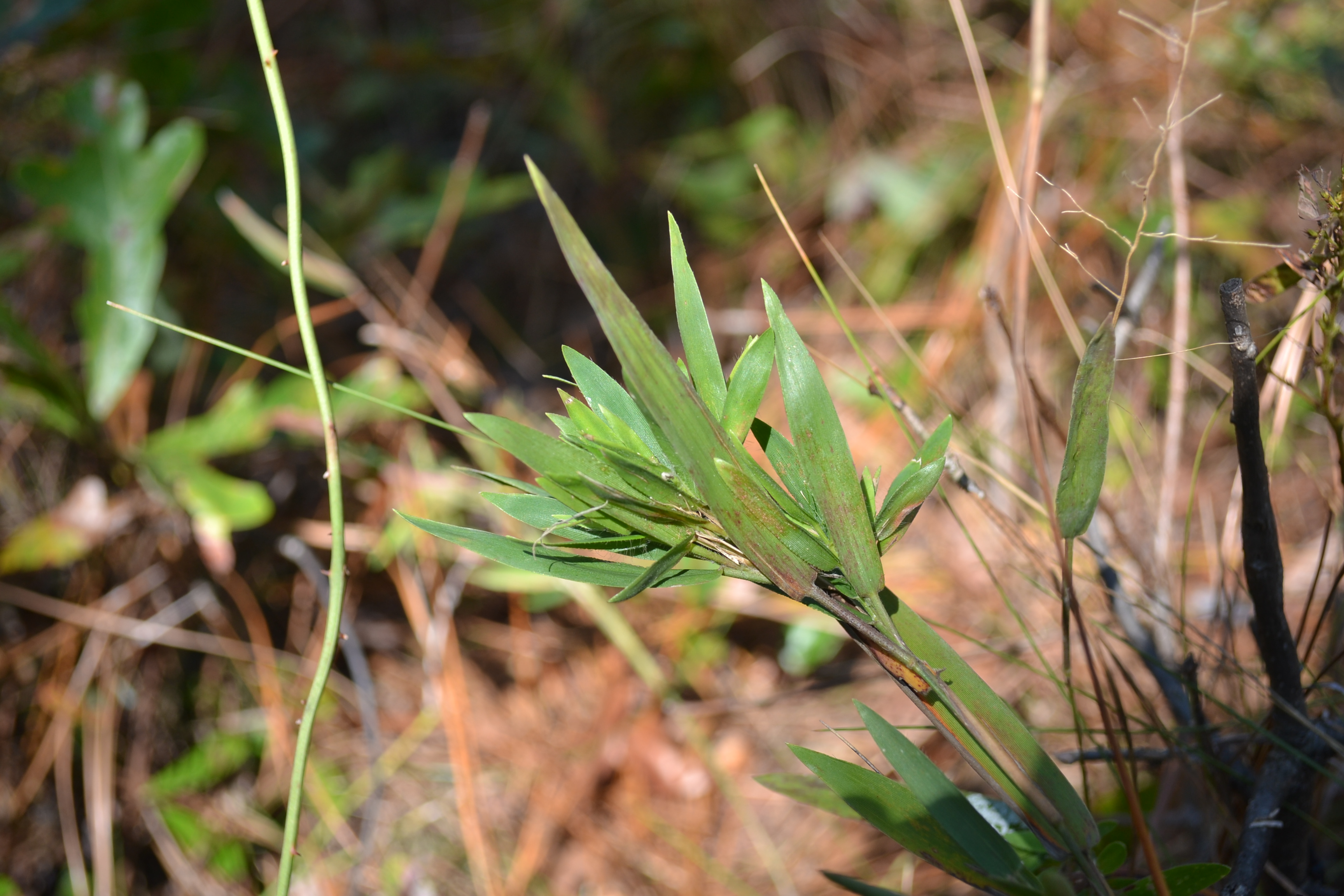Difference between revisions of "Dichanthelium ovale"
(→Description) |
(→Distribution) |
||
| Line 27: | Line 27: | ||
==Distribution== | ==Distribution== | ||
| + | ''D. ovale'' grows in the eastern United States, ranging from east Texas up to New York and Michigan, excluding West Virginia, Tennessee, and Missouri. <ref name= "USDA"/> | ||
| + | |||
==Ecology== | ==Ecology== | ||
===Habitat=== <!--Natural communities, human disturbed habitats, topography, hydrology, soils, light, fire regime requirements for removal of competition, etc.--> | ===Habitat=== <!--Natural communities, human disturbed habitats, topography, hydrology, soils, light, fire regime requirements for removal of competition, etc.--> | ||
Revision as of 16:19, 30 May 2018
| Dichanthelium ovale | |
|---|---|

| |
| Photo by Kevin Robertson | |
| Scientific classification | |
| Kingdom: | Plantae |
| Division: | Magnoliophyta - Flowering plants |
| Class: | Liliopsida - Moncots |
| Order: | Poales |
| Family: | Poaceae |
| Genus: | Dichanthelium |
| Species: | D. ovale |
| Binomial name | |
| Dichanthelium ovale (Elliot) Gould & C.A. | |

| |
| Natural range of Dichanthelium ovale from USDA NRCS Plants Database. | |
Contents
Taxonomic Notes
Synonyms: Panicum commonsianum Ashe, Panicum commonsianum var. commonsianum, and Panicum ovale Elliott.
Varieties: Dichanthelium ovale (Elliott) Gould & Clark var. addisonii (Nash) Gould & Clark, and Dichanthelium ovale (Elliott) Gould & Clark var. ovale.
Description
Also known as eggleaf rosette grass, D. ovale is a native perennial graminoid that is a member of the Poaceae family. It has a rapid growth rate reaching a mature height of 1.7 meters on average, and a short lifespan. [1]
Distribution
D. ovale grows in the eastern United States, ranging from east Texas up to New York and Michigan, excluding West Virginia, Tennessee, and Missouri. [1]
Ecology
Habitat
Conservation and Management
Cultivation and restoration
Photo Gallery
References and notes
- ↑ 1.0 1.1 USDA Plants Database URL: https://plants.usda.gov/java/charProfile?symbol=DIOV